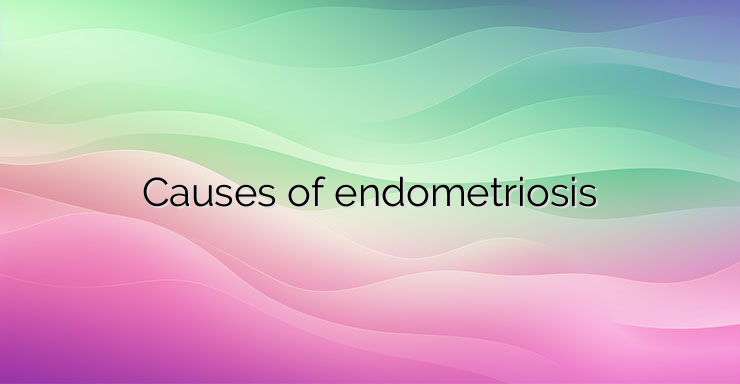One of the leading hypotheses for the pathophysiological changes in endometriosis is that there is a change in the localization of endometrial cells – those that make up the endometrium – the layer that covers the inner surface of the uterine cavity. In endometriosis, these cells move from the uterine cavity to other organs and tissues during menstruation. Retrograde flow of the surface layer of the uterus, which is regularly shed at the end of each menstrual cycle, through the fallopian tubes, is often observed and can lead to intra-abdominal localization of endometrial tissue. Also, it can reach other organs and tissues through the lymphatic vessels or blood circulation. These cell masses with altered localization have the same histological characteristics as the intrauterine endometrium. The tissue contains estrogen and progesterone receptors and therefore grows, differentiates and bleeds when hormone levels change during the menstrual cycle. Also, in turn, the endometrial tissue produces estrogen, but also prostaglandins. In some cases, endometrial tissue with external localization can self-limit its growth, as seen in pregnancy, possibly due to increased levels of progesterone. In addition, this tissue can induce inflammation and an increase in macrophage populations and the production of cytokines, key mediators of inflammation. A leading cause of the condition is genetic predisposition. In patients with severe forms of endometriosis and disorders in the anatomical features of the small pelvis, infertility is often observed, due to the inflammatory processes that lead to disorders in fertilization, implantation of the fertilized egg and its passage through the fallopian tubes. Sometimes, even with mild forms of the disease, fertility disorders are observed, which are due to one of the following reasons: Increased frequency of accumulation of follicles in the ovary that cannot burst; Increased activity of prostaglandins in the peritoneum or increased activity of macrophages, which affects fertilization, sperm and egg functions; Inability of the endometrium to provide suitable tissues for implantation of the fertilized egg; Family burden; Lack of pregnancies and births; Early onset of menstruation; Late menopause; Shorter menstrual cycles combined with heavy and long-lasting menstruation; Anatomical abnormalities of the uterus. References: https://www.msdmanuals.com/professional/gynecology-and-obstetrics/endometriosis/endometriosis


Leave a Reply